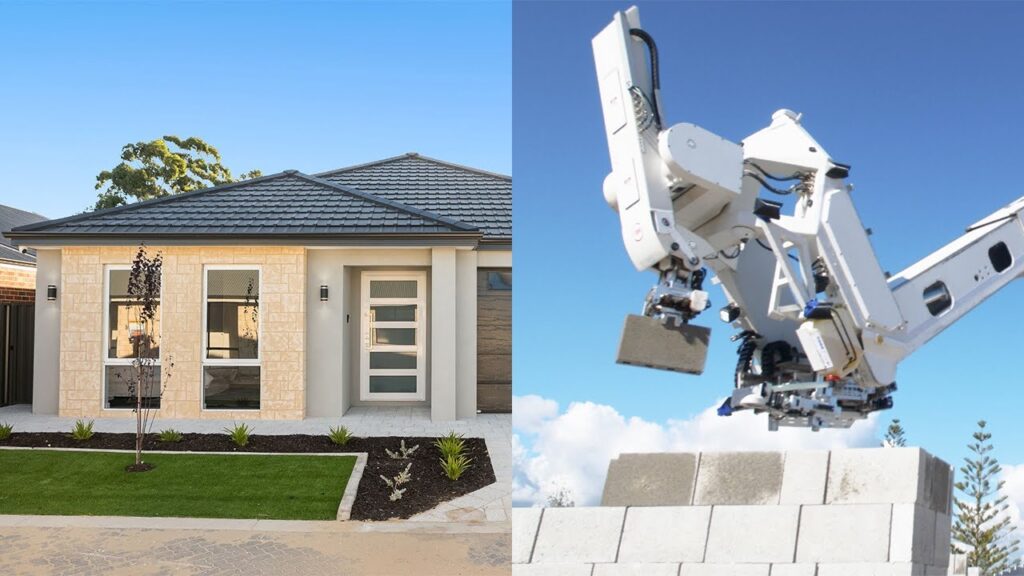Robots have come a long way since their humble beginnings in the industrial sector. From assembly lines to warehouses, these mechanical beings have revolutionized the way we manufacture and distribute goods. And now, they are even building houses. Yes, you heard that right. A recent YouTube video showcased a remarkable new development in Australia - a house constructed entirely by a gigantic industrial robot. This is a true game-changer in the world of construction, and it could have far-reaching implications for the future.
The video, titled "This Robot-Built House Could Change Everything," has been making waves in the industry, catching the attention of construction experts and enthusiasts alike. It showcases the construction process of a fully functional house, from foundation to roof, all done by a massive automated robot. The buyers of this house are not just purchasing a new home; they are owning a piece of history.
Industrial robots have been used in construction for quite some time now, but their involvement was limited to performing repetitive tasks or aiding workers in specific areas. With this new development in Australia, however, the robot takes center stage, demonstrating its ability to autonomously construct an entire house. This achievement marks a significant milestone in the integration of robotics in the construction industry.
So, what does this mean for the future of construction? To answer this question, let us delve deeper into the mechanics and implications of building a house with an industrial robot.
Firstly, let's discuss the robot itself. With its massive size and precise movements, it is capable of executing complex construction tasks with remarkable accuracy. The robot's capabilities include laying bricks, pouring concrete, and even installing windows and doors. By utilizing advanced sensors and algorithms, the robot can navigate and adapt to the construction site in real-time, ensuring optimal construction quality.
One of the most intriguing aspects of this project is the potential cost savings it presents. Traditionally, constructing a house involves a substantial financial investment, with expenses ranging from labor costs to material waste. However, with the use of an industrial robot, these costs can be significantly reduced. The precision and efficiency of the robot minimize human error and optimize the use of materials, resulting in less wastage and lower overall expenses.
Nevertheless, it is important to address the concerns surrounding job displacement. As the construction industry becomes increasingly automated, the fear of job loss among construction workers is understandable. However, it is crucial to view this development as an opportunity for re-skilling and re-allocation of human resources. Instead of replacing workers, the robot can assist them in completing tasks more efficiently. This collaboration between humans and machines can lead to improved productivity and job satisfaction.
Now, let us consider the long-term impact of robot-built houses. With the ability to construct houses in a fraction of the time it takes humans, we can expect a significant increase in the speed of construction projects. This is particularly beneficial in addressing the global housing crisis, as it allows for the rapid deployment of affordable homes. Additionally, the precision and consistency of robot-built houses can enhance their structural integrity, resulting in safer and more durable homes.
As with any significant technological advancement, there are bound to be challenges that need to be addressed. One such challenge is the initial investment required to set up a robotic construction system. The cost of an industrial robot can vary significantly depending on its capabilities and specifications. However, as the technology becomes more widespread and standardized, we can anticipate a decrease in the industrial robot price, making it more accessible to a wider range of construction companies.
In conclusion, the emergence of an industrial robot capable of constructing houses represents a major milestone in the construction industry. This groundbreaking development offers a plethora of benefits, ranging from cost savings to increased productivity and improved housing availability. While there may be challenges to overcome, the integration of robots in construction holds great promise for the future. As advancements continue, we can expect to see more robot-built houses and a transformative shift in the way we build our homes. The era of robot construction is truly upon us, and it is an exciting time to witness history in the making.
Industrial Robot
"Revolutionizing Construction: The Potential of Robot-Built Homes Unveiled!"


